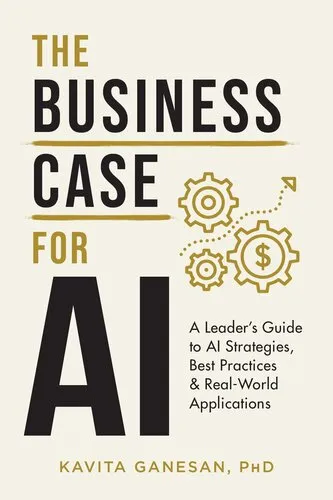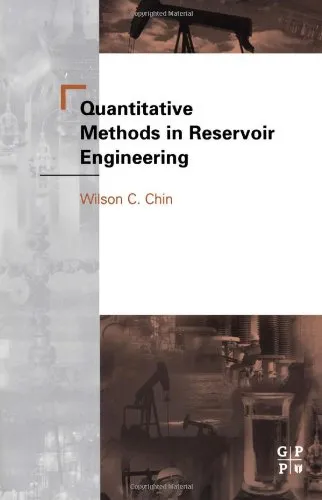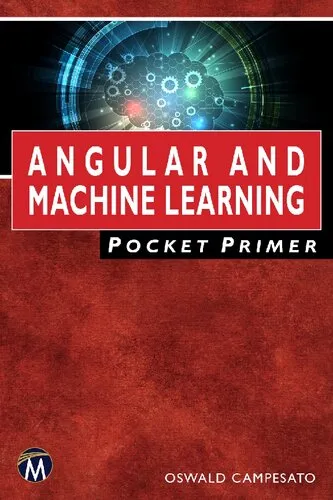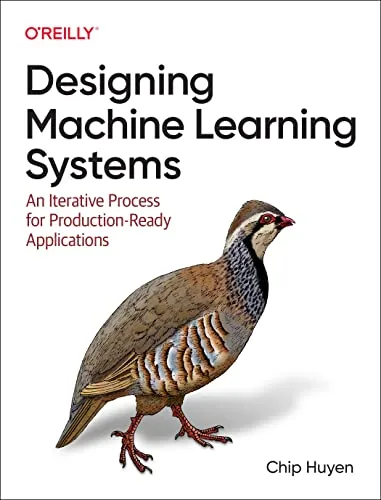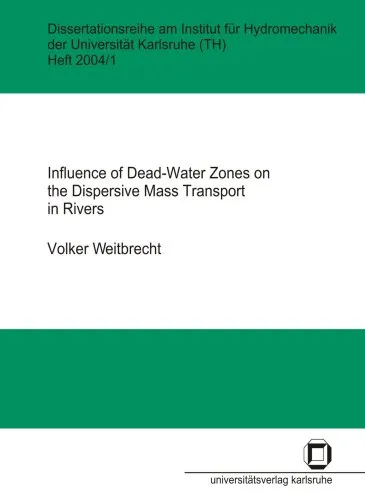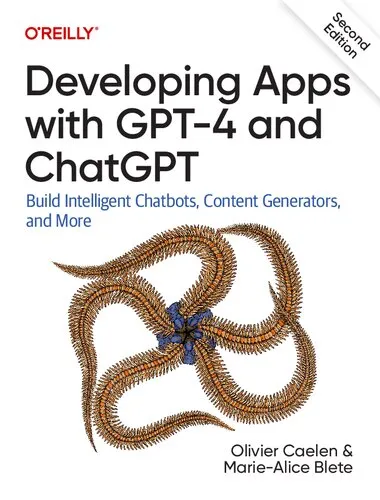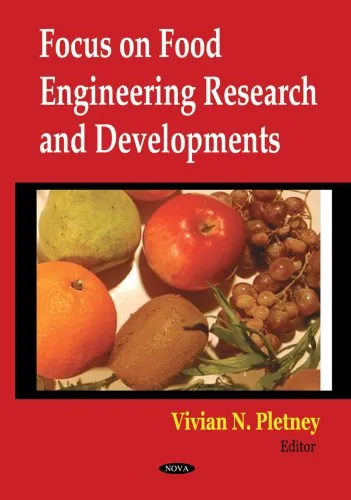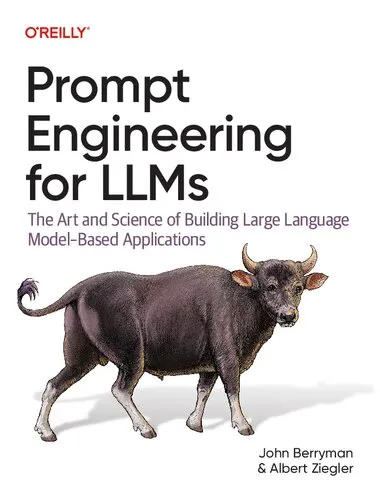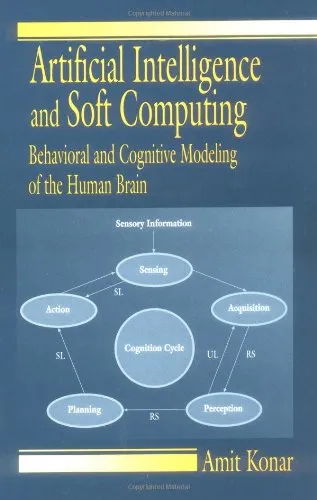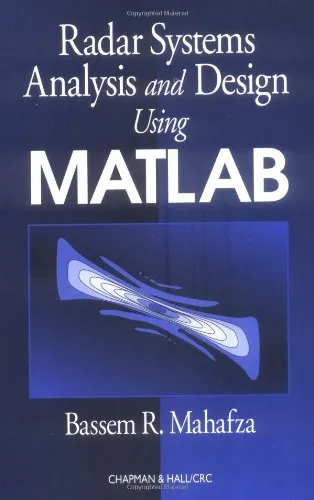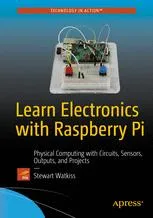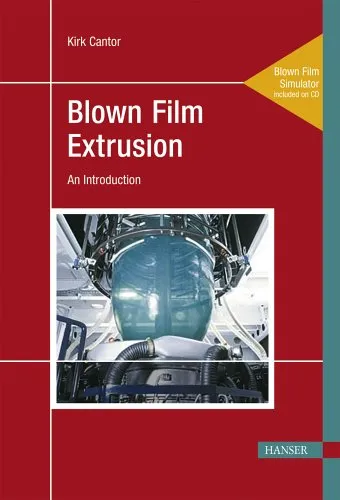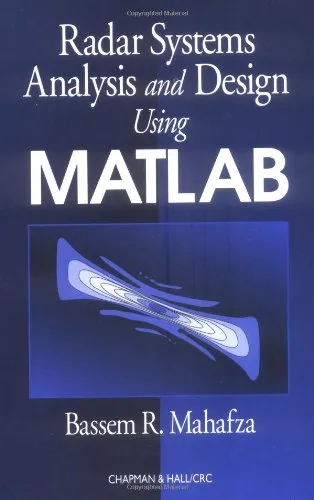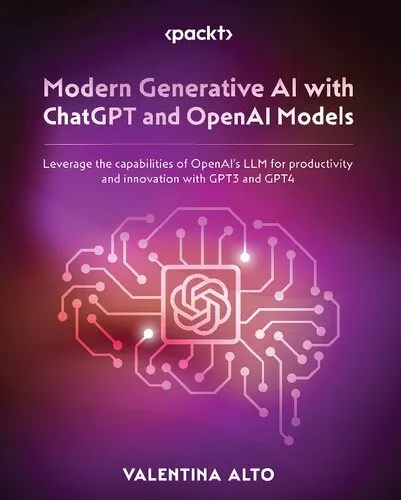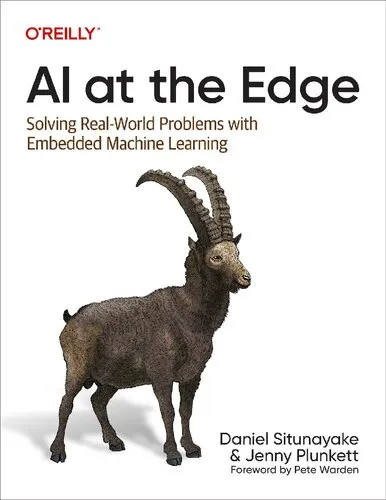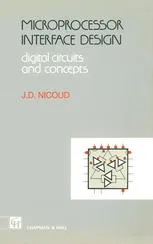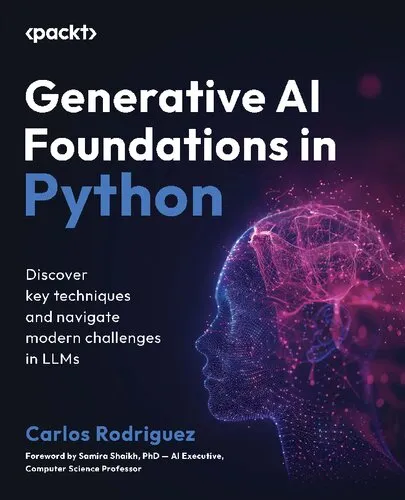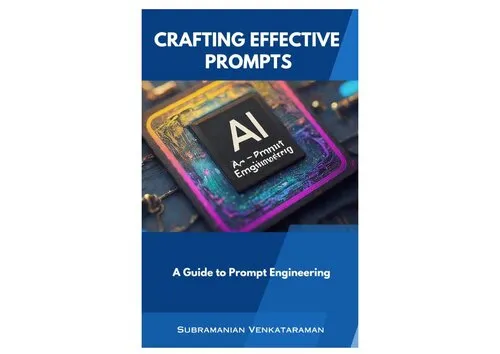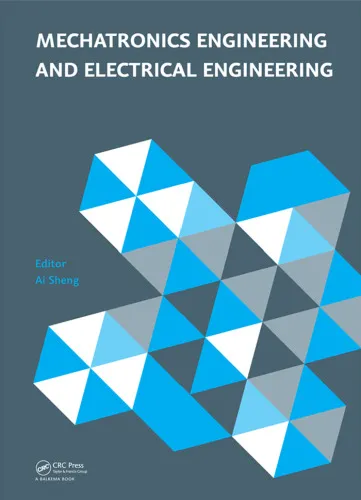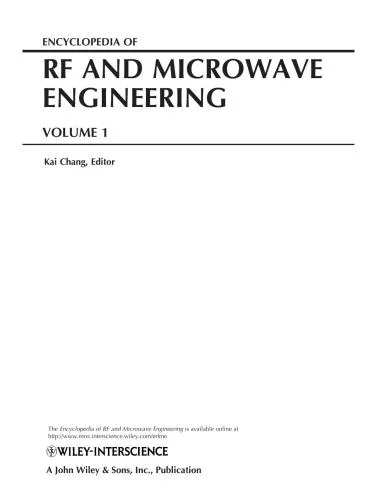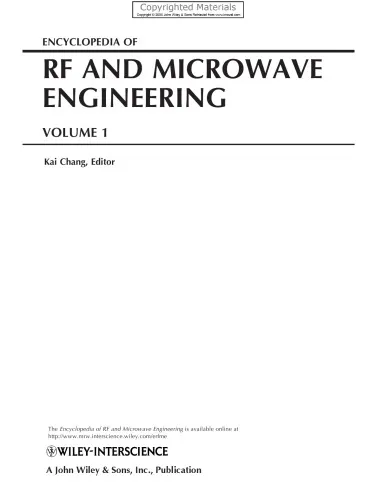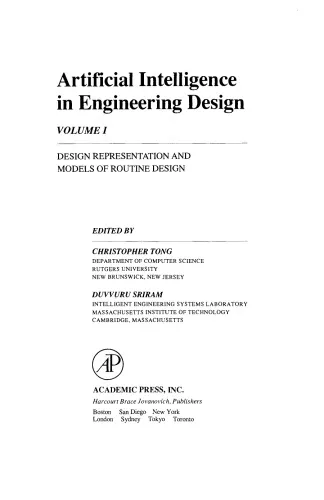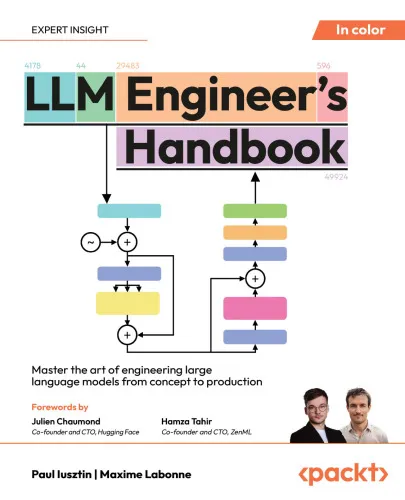Artificial intelligence for engineering design analysis and manufacturing
4.5
بر اساس نظر کاربران

شما میتونید سوالاتتون در باره کتاب رو از هوش مصنوعیش بعد از ورود بپرسید
هر دانلود یا پرسش از هوش مصنوعی 2 امتیاز لازم دارد، برای بدست آوردن امتیاز رایگان، به صفحه ی راهنمای امتیازات سر بزنید و یک سری کار ارزشمند انجام بدینکتاب های مرتبط:
خلاصه تحلیلی کتاب
کتاب Artificial intelligence for engineering design analysis and manufacturingpp.13—22 اثری تخصصی و پژوهشی است که توسط Kartam, Nabil، Flood, Ian و Tongthong, Tanit به نگارش درآمده و به بررسی نقش هوش مصنوعی در حوزه طراحی مهندسی، تحلیل فنی و فرآیندهای تولیدی میپردازد. این اثر، با تمرکز بر بخشهای مشخص میان صفحات ۱۳ تا ۲۲، دیدگاههای نو و کاربردی را برای مهندسان و محققانی که به دنبال بهرهگیری از AI در پروژههای صنعتی هستند، ارائه میدهد.
در این کتاب، نویسندگان تلاش کردهاند تا مرز میان دانش نظری و راهکارهای عملی را از میان بردارند و با استفاده از مثالهای دقیق، نشان دهند که چگونه الگوریتمهای یادگیری ماشینی و سیستمهای هوشمند میتوانند تصمیمگیری و طراحی را متحول کنند. مطالعه این بخشها، برای کسانی که میخواهند در عمق مباحث طراحی مبتنی بر داده و تحلیل پیشرفته وارد شوند، ضروری است.
نکات کلیدی و کاربردی
یکی از نکات برجسته این کتاب، ارائه چارچوبهای گامبهگام برای بکارگیری هوش مصنوعی در مدلسازی مهندسی است. این چارچوبها بر اساس تجربههای عملی نویسندگان و دادههای واقعی پروژههای صنعتی تدوین شدهاند.
کلمه کلیدی فرعی «هوش مصنوعی در طراحی مهندسی» در این اثر به شکل جامع مورد بررسی قرار گرفته است. همچنین، بهینهسازی فرایندهای تولید با استفاده از AI و تکنیکهای نوین برنامهریزی تولید، از دیگر محورهای اصلی کتاب محسوب میشود.
خواننده با مطالعه دقیق این بخش، نهتنها با روشهای تحلیل عملکرد سیستمها آشنا میشود، بلکه قادر خواهد بود به شکل استراتژیک از ظرفیتهای یادگیری ماشینی برای بهبود نتایج طراحی و تولید استفاده کند.
نقلقولهای ماندگار
در بخشهای میانی این کتاب، جملاتی وجود دارد که عصاره تفکر نویسندگان را به تصویر میکشند. این نقلقولها گواهی بر عمق نگاه و تجربه عملی آنان در حوزه کاربردهای AI هستند.
اهمیت هوش مصنوعی در مهندسی، نه فقط در اتوماسیون که در خلق رویکردهای نوآورانه نهفته است. نامشخص
ادغام تحلیل داده و طراحی خلاق، آینده تولید را بازتعریف خواهد کرد. نامشخص
چرا این کتاب اهمیت دارد
در عصر تحول دیجیتال، مهندسان و محققان نیاز دارند ابزارها و رویکردهای نوین را به کار گیرند. کتاب Artificial intelligence for engineering design analysis and manufacturingpp.13—22 پلی است میان دانش نظری و تکنیکهای عملی که به شکل مستقیم بر بهرهوری و کیفیت محصول اثر میگذارد.
این اثر با نگاهی جامع به کاربردهای AI در طراحی و تحلیل، روندهایی پایدار و آیندهمحور را معرفی میکند. حتی برای محققانی که تازه به این حوزه قدم گذاشتهاند، مطالعه این کتاب میتواند مسیر روشنتری برای تحقیقات و پروژههای صنعتی فراهم کند.
نتیجهگیری الهامبخش
در پایان، کتاب Artificial intelligence for engineering design analysis and manufacturingpp.13—22 را باید بهعنوان یک منبع ارزشمند و کاربردی برای هر پژوهشگر یا مهندس جدی در نظر گرفت. این اثر نهتنها به بررسی جزئیات فنی میپردازد، بلکه انگیزه و الهام لازم برای ورود به عرصههای نوین مهندسی را فراهم میآورد.
اگر به دنبال ارتقاء دانش خود در زمینه طراحی، تحلیل و تولید هستید، و میخواهید موارد واقعی و قابل اتکا از کاربردهای هوش مصنوعی را مطالعه کنید، این کتاب نقطه شروعی عالی خواهد بود. مطالعه آن را به همکاران یا دوستان خود پیشنهاد دهید تا این نگاه مدرن در جامعه علمی و صنعتی گسترش یابد.
Analytical Summary
The book chapter “Artificial intelligence for engineering design analysis and manufacturingpp.13—22” delves into the critical convergence between artificial intelligence and the engineering lifecycle, highlighting how machine learning algorithms, expert systems, and intelligent optimization tools can transform design workflows, analytical processes, and manufacturing systems.
Written by Kartam, Nabil; Flood, Ian; and Tongthong, Tanit, this work presents an academic yet practical exploration into the applicability of AI technologies within engineering contexts. From conceptual design to final fabrication, the chapter provides systematic frameworks for integrating computational intelligence into engineering analysis and manufacturing pipelines. The content addresses the challenges of modelling complex systems, handling large datasets, and automating multi-criteria decision-making.
Each section emphasizes the symbiotic relationship between human expertise and artificial intelligence tools, arguing that the most effective engineering outcomes arise from a balanced blend of both. While the precise publication date is information unavailable due to no reliable public source, the insights remain highly relevant to today’s industry and academia.
Key Takeaways
Professionals, researchers, and students will walk away from this chapter with a clear conceptual and methodological roadmap for applying AI to the entire engineering design and manufacturing continuum.
The text underscores the importance of selecting suitable AI techniques for specific engineering problems, whether neural networks for predictive modelling or genetic algorithms for optimization. It explores effective ways to integrate computational design automation into traditional processes, increasing speed, precision, and adaptability.
Readers will also appreciate the focus on data-driven decision-making, enabling enhanced performance analysis and resource management—key factors in modern industrial competitiveness.
Memorable Quotes
Artificial intelligence will redefine the boundaries of engineering innovation.Unknown
Integrating AI into manufacturing is not optional; it is a necessity for future efficiency.Unknown
The true power lies in synergizing human expertise with computational intelligence.Unknown
Why This Book Matters
This chapter stands out as a foundational resource for those engaged in AI-driven engineering innovation, offering a bridge between theoretical AI concepts and their concrete industrial applications.
By contextualizing computational design automation within the realities of manufacturing processes, the book enables practitioners to envision more adaptive, responsive, and efficient workflows. It is equally valuable for academics seeking comprehensive material to support teaching and research, and for professionals aiming to keep their engineering practices at the cutting edge.
Its methodical approach ensures that readers can translate AI knowledge into actionable engineering strategies, a skill set increasingly critical as industries transition into Industry 4.0 landscapes.
Inspiring Conclusion
In an era where innovation defines success, “Artificial intelligence for engineering design analysis and manufacturingpp.13—22” offers more than just academic insight—it provides a strategic toolkit for shaping the future of engineering design, analysis, and production.
By embracing the lessons from this work, readers are well-positioned to implement engineering optimization with AI, harness computational design automation, and contribute to the evolving landscape of intelligent manufacturing. The chapter’s authoritative yet accessible tone makes it a must-read across disciplines.
Your next step is clear: Read, reflect upon, and share the ideas in “Artificial intelligence for engineering design analysis and manufacturingpp.13—22” with colleagues, peers, and academic circles, and join the conversation on how artificial intelligence will continue to reshape engineering for decades to come.
دانلود رایگان مستقیم
شما میتونید سوالاتتون در باره کتاب رو از هوش مصنوعیش بعد از ورود بپرسید
دسترسی به کتابها از طریق پلتفرمهای قانونی و کتابخانههای عمومی نه تنها از حقوق نویسندگان و ناشران حمایت میکند، بلکه به پایداری فرهنگ کتابخوانی نیز کمک میرساند. پیش از دانلود، لحظهای به بررسی این گزینهها فکر کنید.
این کتاب رو در پلتفرم های دیگه ببینید
WorldCat به شما کمک میکنه تا کتاب ها رو در کتابخانه های سراسر دنیا پیدا کنید
امتیازها، نظرات تخصصی و صحبت ها درباره کتاب را در Goodreads ببینید
کتابهای کمیاب یا دست دوم را در AbeBooks پیدا کنید و بخرید
1498
بازدید4.5
امتیاز0
نظر98%
رضایتنظرات:
4.5
بر اساس 0 نظر کاربران
Questions & Answers
Ask questions about this book or help others by answering
No questions yet. Be the first to ask!

